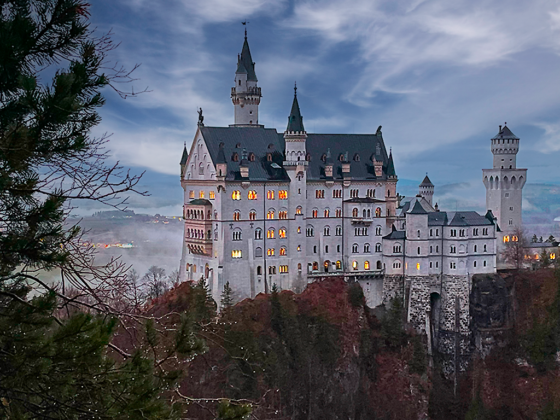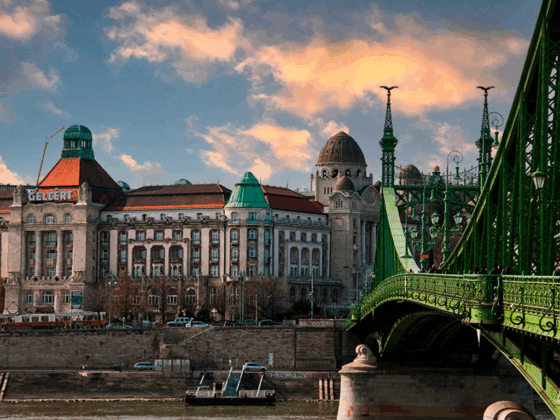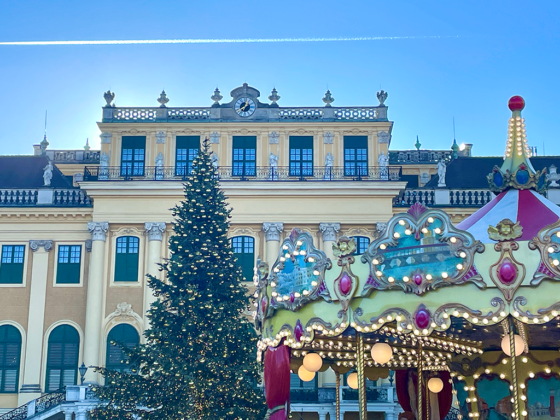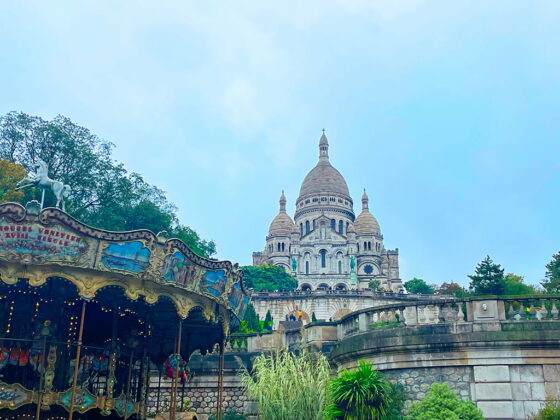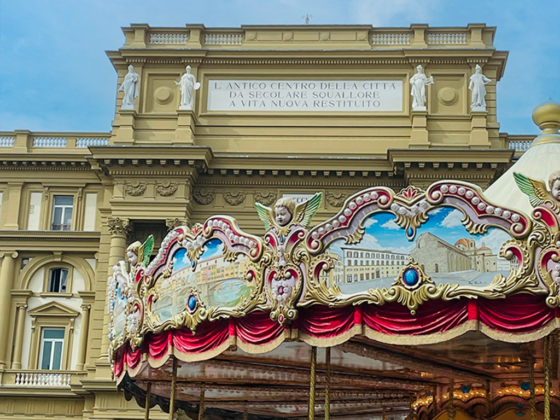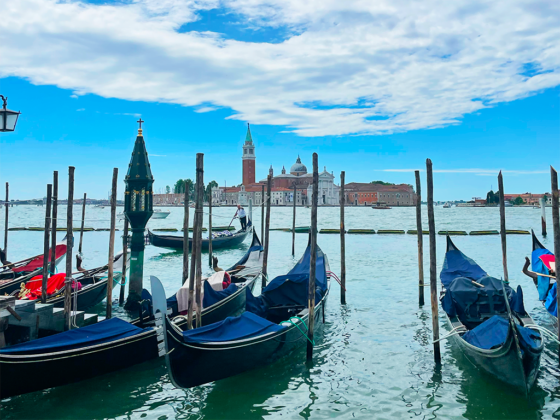Like every year, right on time, we take advantage of the Easter weekend to get away from the routine a bit and take a getaway for a few days, usually to a European capital. This year we decided to combine two cities: Prague and Budapest, two cities that, although close to each other, have completely different personalities.
We begin in Prague. The cobbled streets of the old town, its majestic castles and Gothic churches represent the authentic style we have come to expect from the city. Between a visit to Prague Castle, a walk on Charles Bridge and a tour of the Easter markets, we discover the city. In April, the days are getting longer and the sun is beginning to warm the atmosphere. We stop at outdoor cafés and enjoy the warmth of the sun as spring begins to break out and the first blossoming trees paint the avenues along the Vltava River white.
Here is our four-day itinerary in Prague.
Map
Day 1: Obecní Dům, Powder Gate, Clementinum, Old Town Square, Astronomical Clock Tower, Charles Bridge and Old Town Tower
As soon as we arrive, we leave our luggage and head straight for the centre, the Old Town will be our starting point.
We begin at Obecní Dům, the Municipal House, one of the finest examples of Art Nouveau in Europe. Inside you can visit the Smetana Hall, but even simply entering the café is a very special experience: period furniture with background music.
Immediately next to it, the Gothic tower of the Powder Gate , black and imposing, marks the ancient entrance to the city. At 65 metres high, it is richly decorated in stone: among the carvings are Czech kings, saints and patrons, telling the story and symbolism of the city. To reach the top you have to climb a spiral staircase of 186 stone steps.
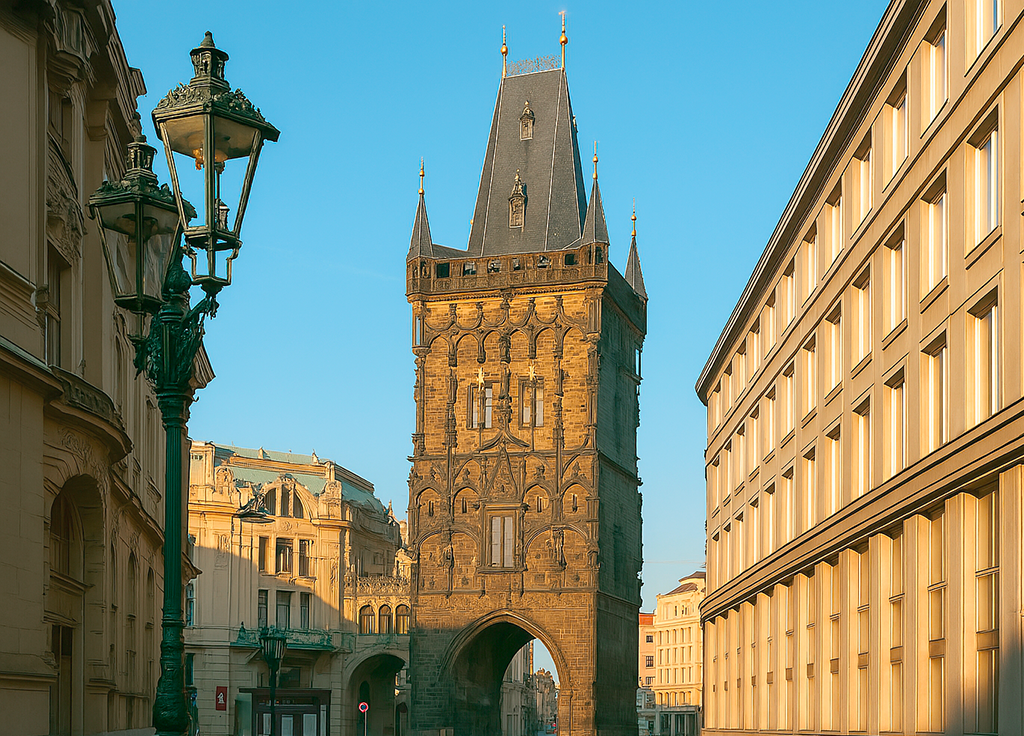
We continue to the Clementinum, a vast architectural complex that includes:
- The Baroque Library, renowned for its elegant hall decorated with frescoes and historical globes, containing over 20,000 volumes, mainly on theology.
- The 68-metre-high Astronomical Tower offers a panoramic view of the city. In the past, the tower was used for meteorological and astronomical observations.
- The Chapel of Mirrors, a Baroque hall dating from 1724 decorated with frescoes, statues and mirrors, is known for its excellent acoustics, making it a venue for classical music concerts.
Our recommendation is to join a 45-minute guided tour.
We move to the real heart of Prague, the Old Town Square, one of the most scenic squares in Europe, with its Gothic, Baroque and Renaissance facades. During the Easter period, the square is filled with stalls selling all sorts of food and craftsmen’s work. We sample everything and wander around the square for a while.
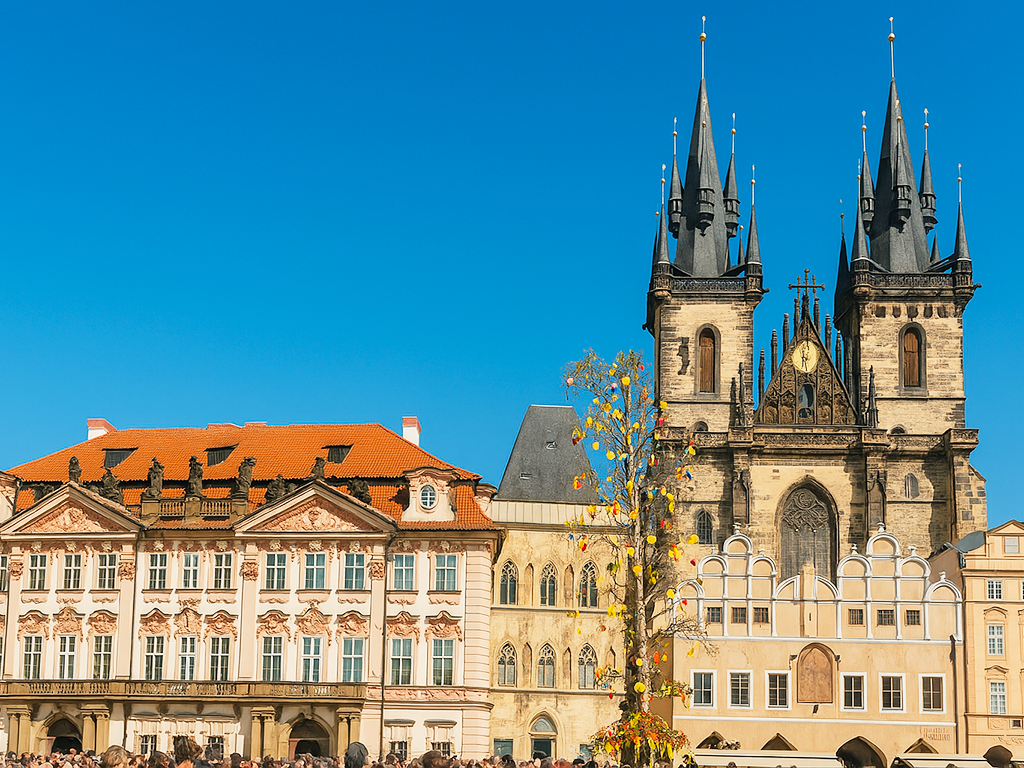
It is possible to climb to the top of the Town Hall Tower, which houses the clock. The viewing gallery is 41 metres high and can be reached by lift. The view of Prague is shown in all its splendour: with the many churches, towers, the roofs of its beautiful buildings and the façade of the Church of St Mary of Tyn as a backdrop. Further in the distance, Prague Castle can also be seen.
On the Town Hall Tower stands the world-famous Astronomical Clock, one of the most famous medieval clocks in the world. At the stroke of every hour on the hour, the ancient clock is activated: the figures of the apostles have been coming out to greet the world since 1410.
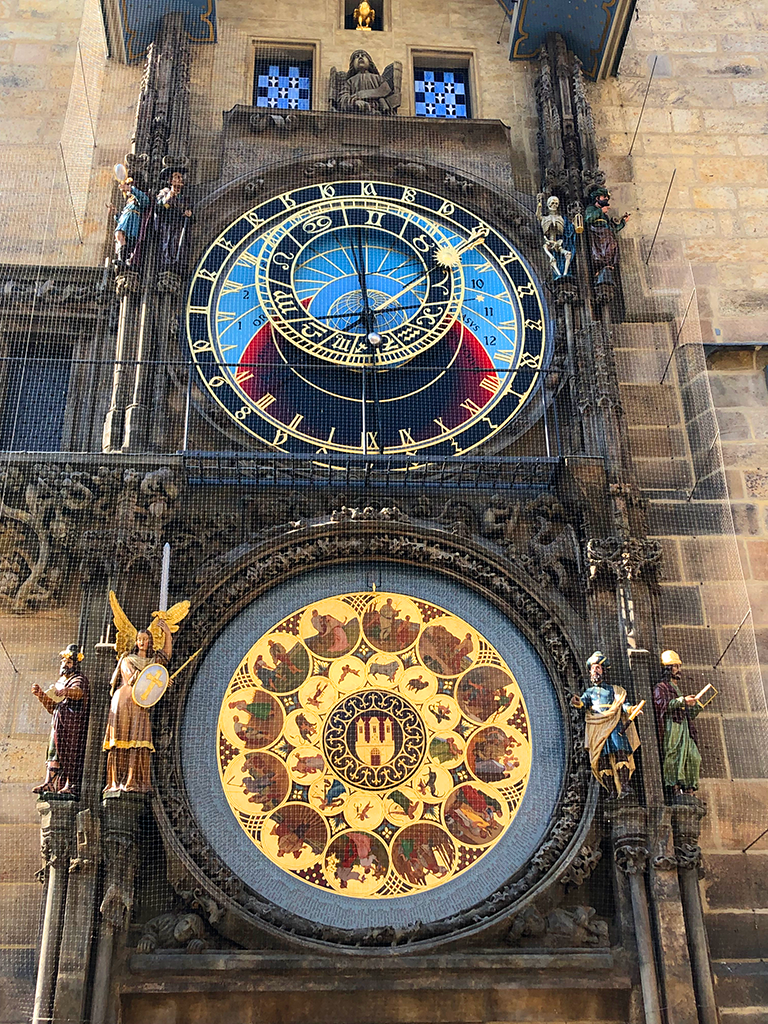
In addition to the Tower, the Town Hall itself and its basement can also be visited on a guided tour. The Romanesque dungeons (from the 12th century, the oldest part of the Town Hall) were once at street level, but after several floods, the entire area was raised several metres and what had been the original ground floor became a basement.
Towards sunset, we cross the famous Charles Bridge, its atmosphere is surreal: street artists, statues, musicians. There are more than 30 statues along the bridge, all in Baroque style and with a religious theme (most are copies of the originals kept in the National Museum in Prague).
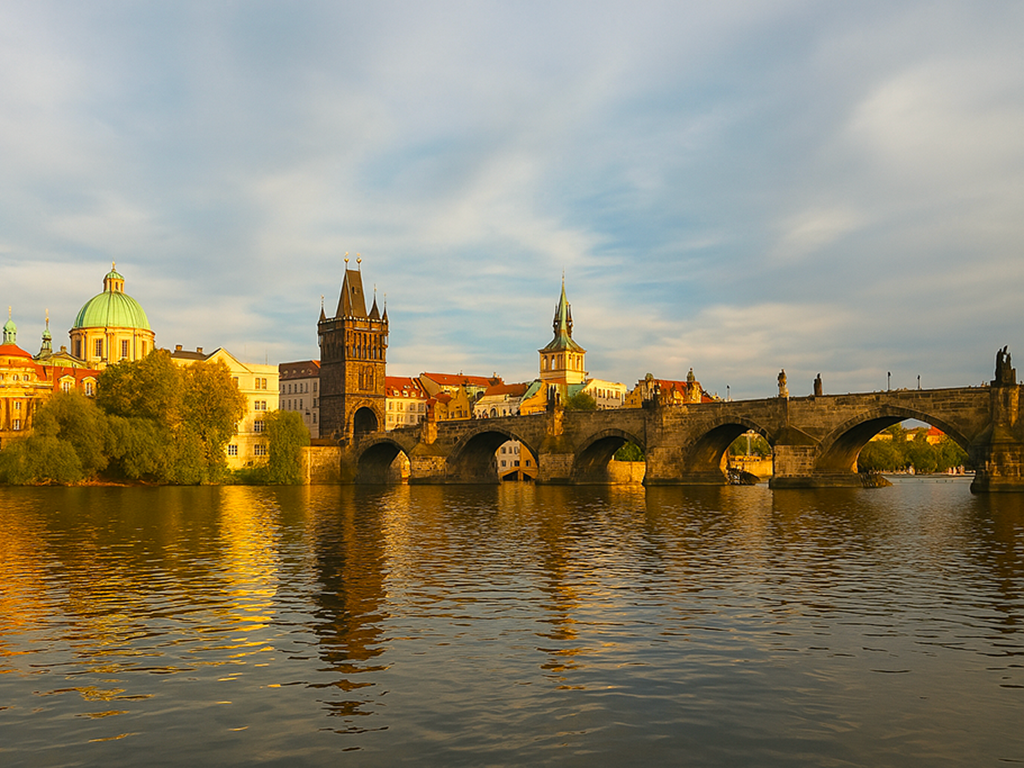
At both ends of Charles Bridge are three towers. The first and best known is the Old Town Tower, so called because it is located on the Old Town side of Prague. It is a Gothic masterpiece and can be visited. Inside there are exhibitions on the construction of the bridge and the best part is the view of the bridge. At the other end are the two towers on the Malá Strana side. The smaller one is the oldest. The other tower is similar to the one on the old side, also in Gothic style. Both are connected by a gallery from where there is a good view of the bridge.
Day 2: Petřín Gardens and Prague Castle
We start the day with a walk along the banks of the Vltava River to Kampa Island, which since 2008 has been adorned with unusual and somewhat disturbing giant sculptures by David Černý. These works depict babies in the act of crawling, are about two metres high and weigh a quintal each. The most disturbing aspect is certainly their faces, devoid of features, imploded inwards, with a sort of bar code in the middle.
From there we ascend to Petřín Gardens, one of the greenest areas of the city. We take the funicular to the top where the Petřín Observation Tower is located. This 1:25 scale copy of the Eiffel Tower was built for the 1891 Jubilee Exhibition. Its top is at the same height above sea level as the original Eiffel Tower in Paris, but to get to the top there are no lifts: we climb 299 steps!
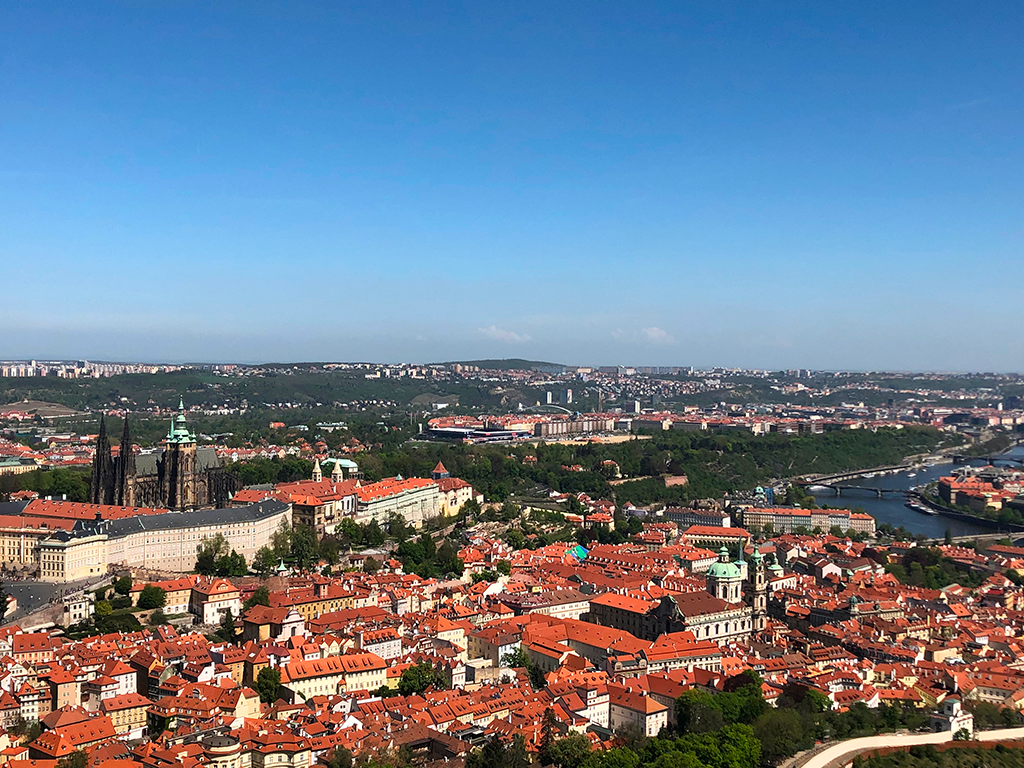
At the top of the hill there are many other attractions to see but we get caught up in the Mirror Maze and become a little bit of a child again, we laughed so much!
In the afternoon we reach the majestic Prague Castle, the largest medieval fortified complex in the world, which contains several buildings worth visiting. The magnificent St Vitus Cathedral with its stained glass windows, high Gothic ceilings and precious side chapels. On the right side is the Great Tower, on which you can climb. The 287 steps are very steep and the spaces somewhat cramped. In addition to the beautiful view, you can see the gears of the bell tower clock and the huge Sigismund Bell.
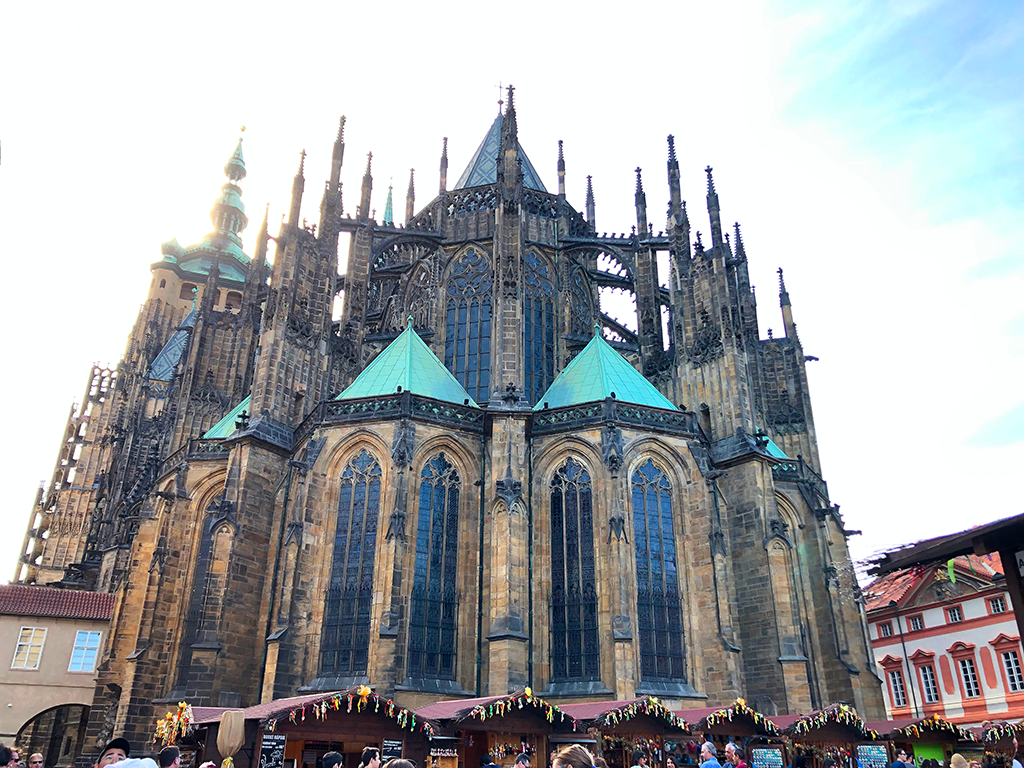
Next to it is the Old Royal Palace, where you can visit the Vladislaus Hall. Continuing our visit, we reach the Romanesque Basilica of St George, one of the oldest churches in the city. Finally, we cannot miss the Golden Lane, a picturesque medieval street famous for its colourful little houses, once home to the castle goldsmiths and, according to legend, alchemists in search of the philosopher’s stone. Today, these small houses house craft shops and small exhibitions, offering a glimpse into the everyday life of the past.
After this immersion in the history of Prague Castle, it is time to head back towards the city centre. We have booked a cruise on the Vltava River to admire Prague from a different perspective. During the cruise we have the chance to see famous monuments such as Charles Bridge, Petřín Hill and the Castle itself from the water, illuminated by the light of sunset. Activities for the average tourist? Maybe so, but we really enjoy cruising through the European capitals along their rivers.
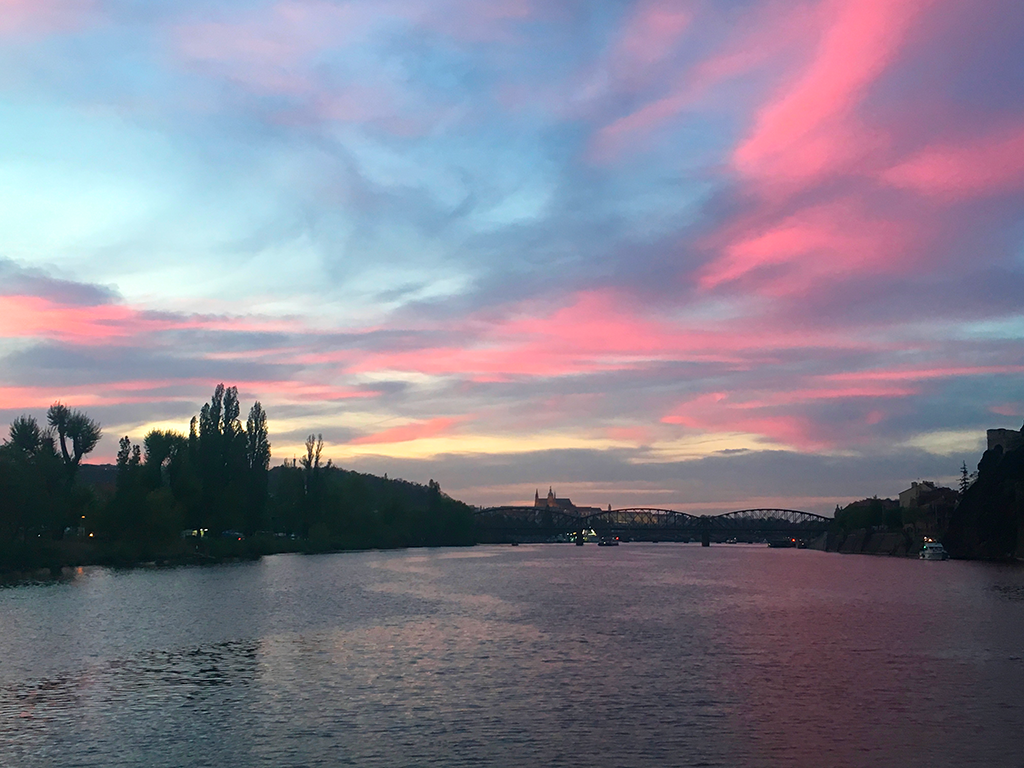
Day 3: Vyšehrad Hill, Dancing House, New Town Hall, Žižkov Television Tower
Today we dedicate ourselves to a lesser-known area: Vyšehrad Hill, the old fortress located south of the city. We visit the Neo-Gothic Church of Saints Peter and Paul, rebuilt several times over the centuries, famous for its twin bell towers soaring into the Prague sky (added to the church in 1903). We stroll through the Slavín National Cemetery, a special memorial cemetery for the great personalities of the Czech Republic. We also enjoy one of the most beautiful and impressive panoramic views of the whole of Prague from the bastions of the fortress.
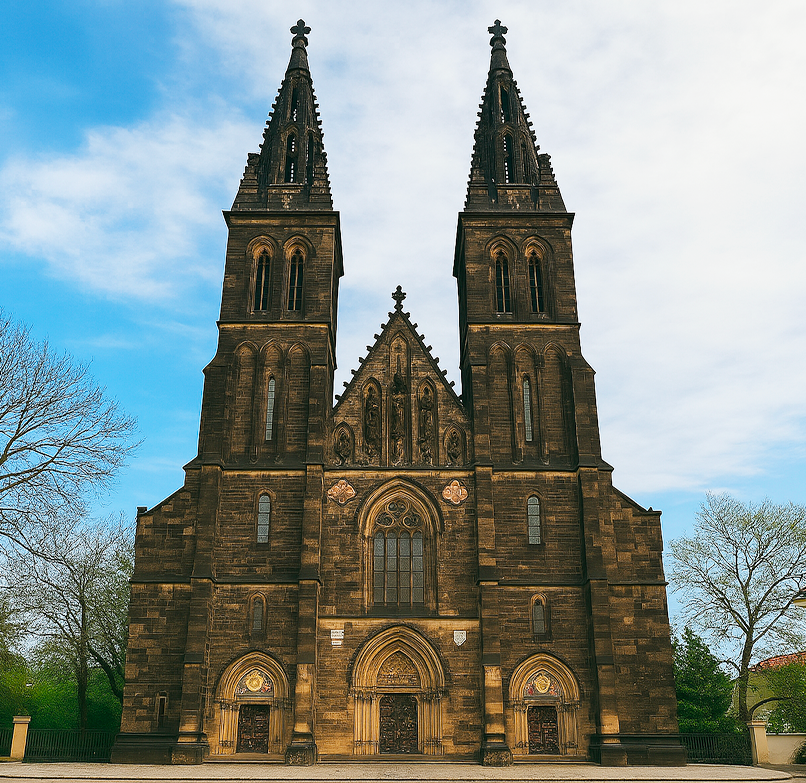
Heading back towards the modern centre, we reach the Dancing House, also known as Fred and Ginger, because of its sinuous shapes reminiscent of two dancers. Inside, there is not much to see; in fact, it houses mainly offices of multinational companies. However, it is possible to go up to the terrace and enjoy a magnificent view of the city with the Castle in the background. There are 2 options to access the observation terrace: pay the ticket or order something at the Glass Bar located at the top (admission is free for those who order a drink).
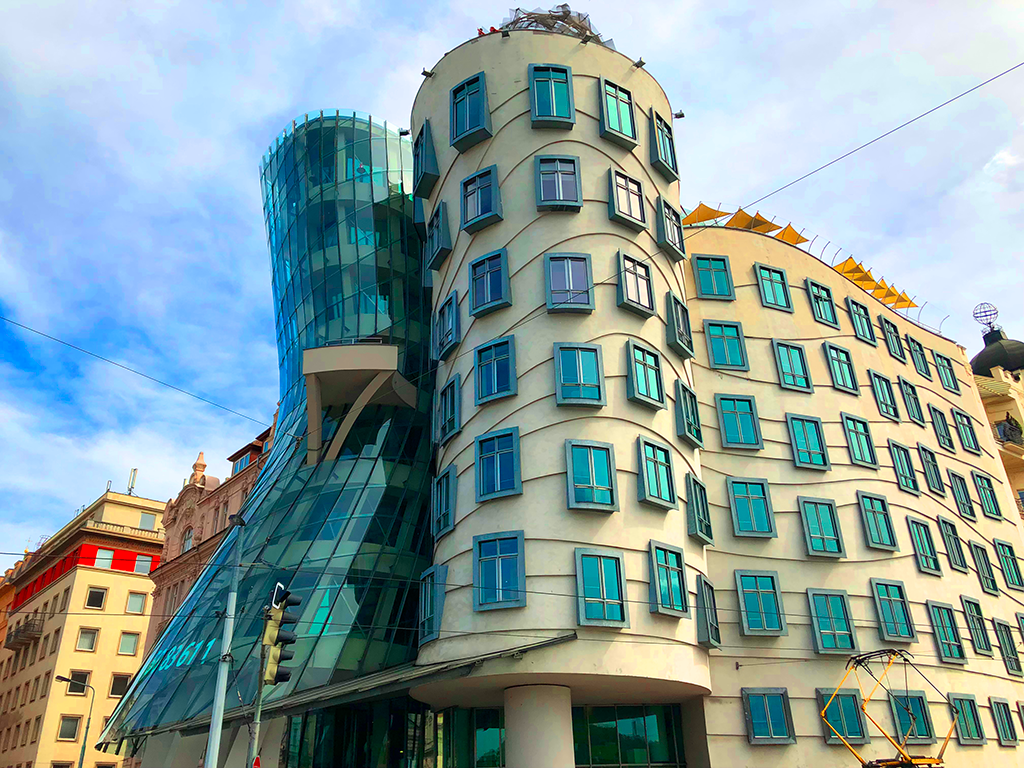
We stroll to Charles Square, one of the largest squares in Europe, characterised by imposing buildings and green spaces. To the north is the New Town Hall, characterised by a combination of Gothic and Renaissance styles. When you arrive, the first thing you notice is the 70-metre high tower on which you can climb to admire the city, and we do! As you climb the 221 steps from inside the tower, you get a panoramic view of Prague in all its glory.
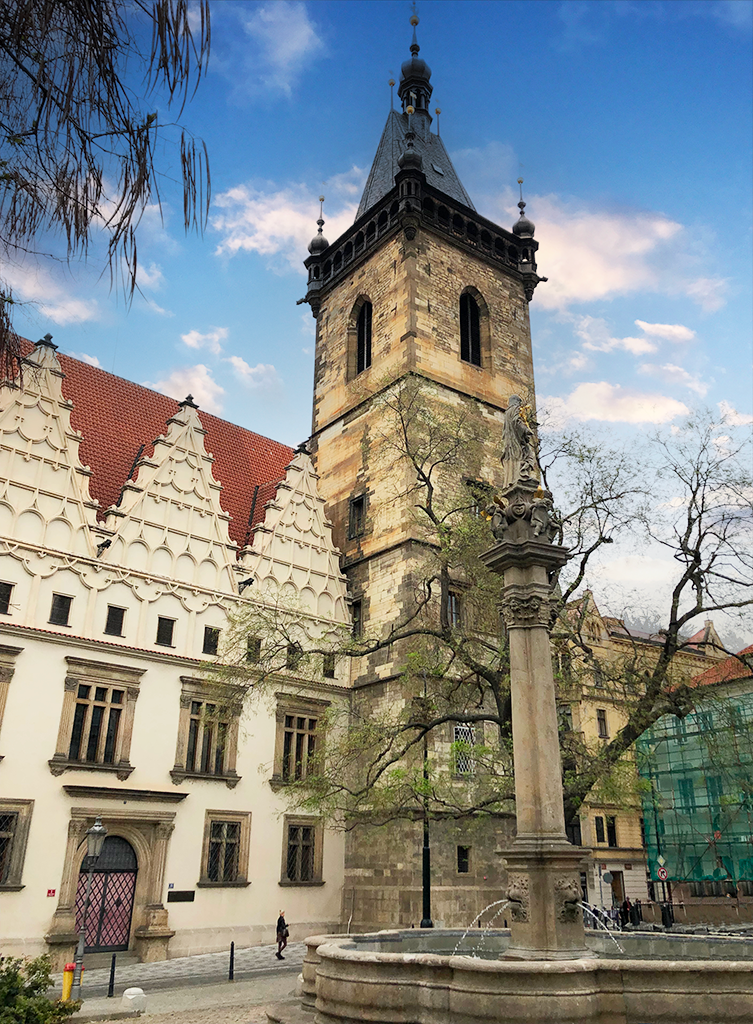
In the late afternoon we head towards Žižkov, an alternative and less touristy district known for its lively bohemian spirit. This is dominated by the Žižkov Television Tower, a tall, futuristic-looking building that contrasts sharply with the city’s traditional architecture. Since 2001, it has been adorned with ten statues of small four-legged children, 350 cm long and 260 cm high, which are faceless, replaced by a bar code (the same ones we found in Kampa). Climbing to the top of the tower, an extraordinary and unique panorama awaits us, embracing the whole of Prague.

Day 4: Josefov Jewish Quarter
We dedicate the last morning entirely to the Josefov Jewish quarter, a place steeped in history and emotion.
We visit the Pinkas Synagogue. After the Second World War, between 1955 and 1960, the synagogue was transformed into the Memorial of the Bohemian and Moravian Victims of the Shoah, was closed for over twenty years during the communist regime and reopened to the public in 1995.
We continue with a visit to the Old Jewish Cemetery where thousands of ancient gravestones overlap creating a decadent atmosphere. Created in 1439, today it has more than 12,000 tombstones and it is estimated that more than 100,000 people are buried there.
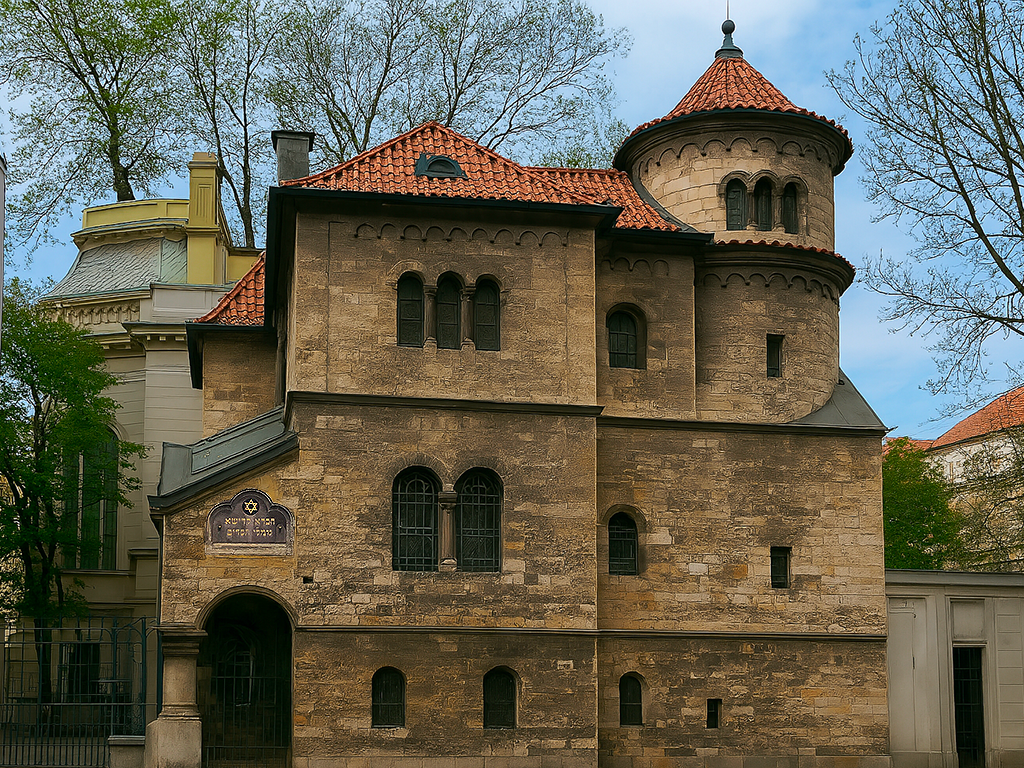
Finally, we visit the beautiful Spanish Synagogue, characterised by an elegant Moorish style inspired by the magnificent Alhambra in Granada, hence its name. Today it houses a permanent exhibition telling the story of the Jews of Bohemia and Moravia and the lives of famous Jews in science and art, including the writer Franz Kafka, the father of psychoanalysis Sigmund Freud and the composer Gustav Mahler.
Our journey continues in Budapest, come with us!
Last modified: 2 September 2025
